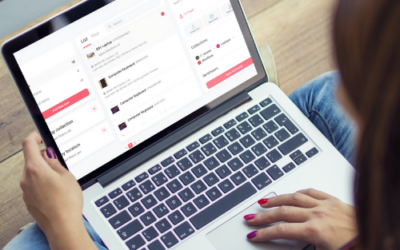Tracking your fixed assets has plenty of benefits. But if you want to make the most out of it, you must do it right. Read this post to learn how.
How A Fixed Asset Register Saves Your Business Time And Money
How A Fixed Asset Register Saves Your Business Time And Money
A business operates and generates revenue with help of different assets. These can be sophisticated industry-specific machinery to something as trivial as a notepad. Out of all business assets, fixed assets have the most significant operational and, in turn, financial impacts on your enterprise.
If you want to enhance your company’s efficiency, reduce operational costs and maximise profits, a robust fixed asset management system lies at the core of it all. Read on to learn how keeping a fixed asset register will save your business time and money.
The Significance of Tracking Fixed Assets
As important as these assets are, it’s imperative to define what they are. Put briefly, these are physical assets owned by a company that cannot be readily converted into cash.
In accounting terms, they fall under the umbrella of noncurrent assets and are items that a company intends to use for more than a year at the time of purchase. Tangible objects like laptops, furniture, vehicles, and buildings are some examples of fixed assets.
A special consideration about these assets, which is also the reason why they need to be tracked in a separate fixed asset register, is that they lose value over time. Although this is not true for all fixed assets, it still is a major characteristic that highlights the need for recording the assets’ value depreciation as they age. This can only be done with effective fixed asset management.
What’s a Fixed Asset Register and How Does it Save You Time And Money
A fixed asset register allows you to log and track unique asset profiles on a streamlined online database. You can log your fixed assets such as laptops, equipment, and furniture and add specific details about each asset and give it a unique digital identity.
With seamless integrations, the system behind fixed asset management software helps it automatically update asset details throughout the database. As a result, high accuracy and accountability enable a business to save the most time and money. Let’s get into the details.
Gives You Accurate Asset Records
Some financial benefits of using a fixed asset register are immediately apparent, and some are discovered in later stages of using this technology. Having extremely accurate asset records available to you at all times is one of the former.
A lot of companies end up stacking shelves upon shelves of similar hardware or other assets. This happens just because they are unable to cross-check what they need and what they don’t at the time of purchase.
On the contrary, with all fixed assets logged on to the register, you have a clear overview of what your business has and what it doesn’t. This helps you avoid duplicate purchases. Moreover, logging assets with important information like price of purchase, warranty info and maintenance requirements help you get the most of each asset.
Makes it Easy to Keep Asset Data Up To Date
Even if you’re already tracking fixed assets with manual asset tracking methods, maintaining up to date asset records is an uphill battle. But it becomes a piece of cake when you’ve got advanced asset tracking software.
Outdated fixed asset records can lead to a range of problems, all of which ultimately lead to a loss of time and money. For instance, ghost and zombie assets, an outcome of below-par fixed asset management, can lead to higher insurance premiums and extra tax-related fines.
Helps Record Fixed Asset Depreciation
As mentioned in the introduction to fixed assets, these items lose value over time. This is also known as fixed asset depreciation. Tracking this depreciation over their life cycle and reporting accurate values for tax and insurance purposes is a very important financial process that helps businesses save money in the long term.
You will inevitably struggle to record the fall in fixed assets’ value if you don’t use the best asset tracking software. This leads to you paying exorbitant insurance premiums and taxes on assets that are no longer in use. Invest in a good asset management system and save yourself a lot of money!
Maintain High Transparency
When it comes to financial efficiency and productivity, it all boils down to accountability among employees, and overall transparency of business operations. If you’re tracking your fixed assets with spreadsheets or other conventional methods, transparency becomes a distant reality.
However, using fixed asset management software brings transparency to every nook and cranny of asset management. The ability to assign assets to employees brings accountability to the table. And when every employee can access and record asset details, transparency is manifest.
itemit’s Fixed Asset Register
itemit’s fixed asset register is a powerful but easy to use software solution for all your fixed asset management needs. You can get the highest level of transparency possible with advanced RFID technology, and other asset labels.
To find out more about how itemit can save your business time and money, you can contact the team at team@itemit.com. You can also fill in the form below to start your 14-day free trial.
Fixed Asset Register
Choose a better way to track your assets
Start your free 14-day trial now
Instant access. No credit card details required.
Related articles
How to Track Manufacturing Production Equipment and Why
Why and How Should You Track Fixed Assets?
There are many benefits to tracking your fixed assets, so you may be wondering what those are? Read this post to learn how and why you should track your fixed assets.
How Can A Fixed Asset Register Be Beneficial To Your Business?
A fixed asset register can provide several benefits and help your business thrive. This article will discuss the benefits of a fixed asset register at length.







